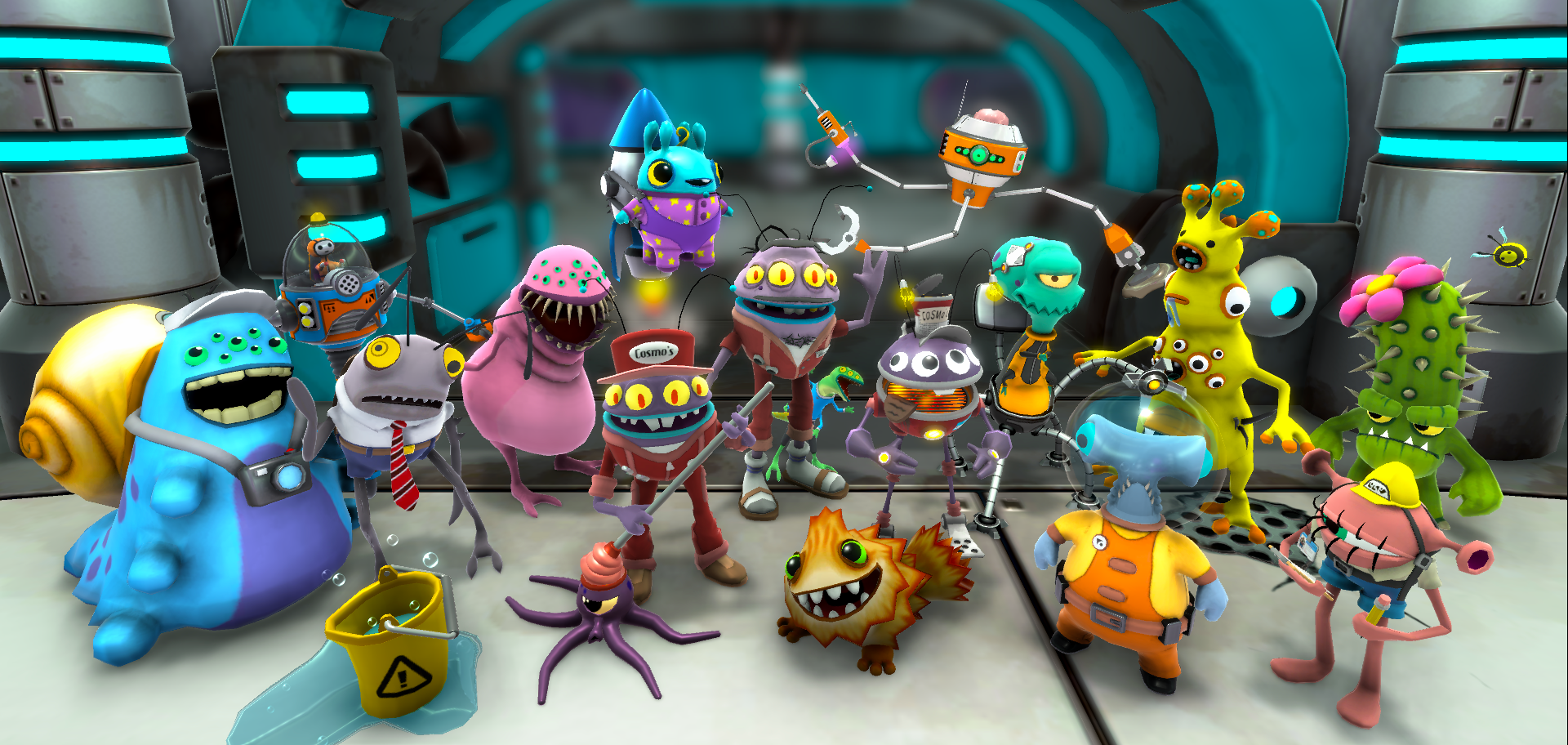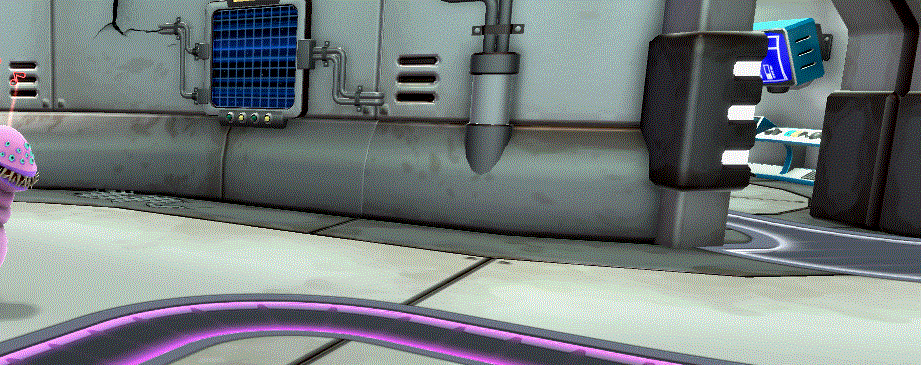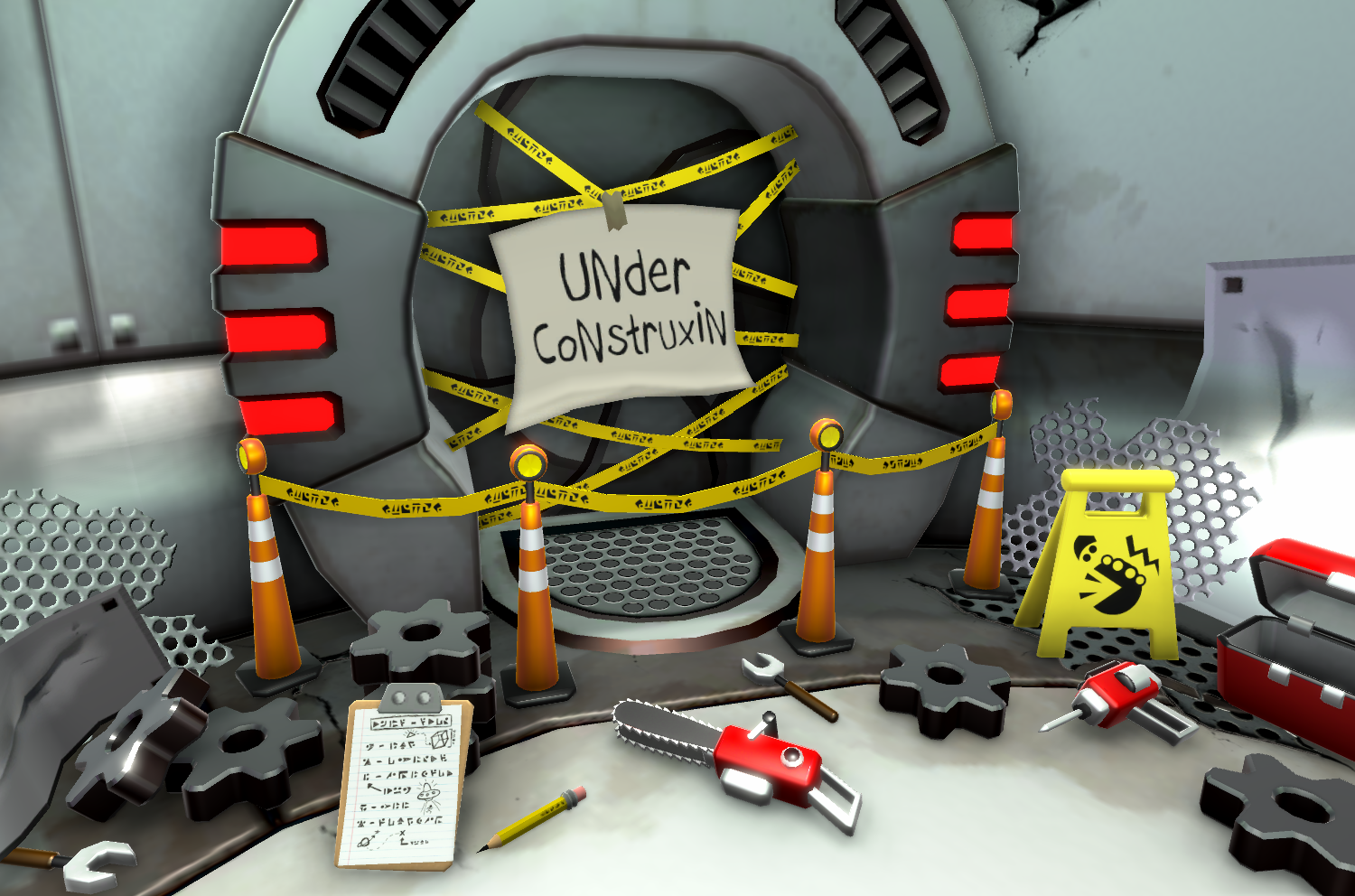This week at Big Sir Games we sat down and had an out of this world interview with our technical artist Bryan Kaelin. We dived into the challenges of being a lead technical artist, what’s he’s currently working on, and the inspiration behind the art style and characters of Cosmo’s Quickstop.

Bryan isn’t just a technical artist. He’s the great Lore king of Cosmo’s Quickstop. When he’s not expanding the universe and creating all the critters and station background he’s the modeler, rigger, texture artist and concept artist. He makes sure everything looks beautiful and aesthetically pleasing.
Basically, he’s rad.
Now without further ado…
Let’s look under the hood of Cosmo’s Quickstop!
The Artistic style is unique in Cosmo’s Quickstop. Where did it originate?
From the start, we knew we wanted a weird and cartoony universe with retro-futurism and Route 66 aesthetics. I drew tons of concepts for characters, machines, and environments while Ian (Bossman of BSG) made rough prototypes for the general game features. A lot was cut, consolidated, rearranged, and expanded as we felt our way toward a manageable scope and a playable game loop. But even while the gameplay started to become smooth and fun, the visual style still seemed rather bland and hollow.
The visuals seem very vibrant now. Did something change?
It all changed when we downloaded Shader Forge. This useful software allows me to control how Unity draws objects at a very granular level using custom shaders. Shaders are great for adding dynamic effects to textures such as making a string of lights scroll or transforming a model’s geometry to wave and bulge. While I was already somewhat familiar with writing shaders using code, I was severely limited I’ve never really cared for the very special brand of tedium that comes with programming.
Shader Forge makes this process much more appealing to me. With its visual node-based system, it shows the flow of shader logic with a preview for every step the computer takes to draw a model. Not only does it let me debug much faster, but it lays out all the functions available in the shader library and removes the guesswork of how to properly hook them up. This has allowed me to add all sorts of vibrancy to effects, characters, lighting, and even the user interface without having to buy and learn an asset specifically designed for one of these tasks.
Can you tell us what you’ve been working on for Cosmo’s Quickstop this month?
I’ve been focusing on final touches and polish throughout the game’s models and effects. In addition to making textures and particles more detailed, I’ve been making visual representations of the various upgrades hidden throughout the game. For example, I added a cream injection tank on the roof of the Coffee Shower to represent an upgrade that lets players make more profit in exchange for higher maintenance.
Upgrades don’t just affect the amenities themselves, but customers as well. One of the upgrades for the animatronic band makes customers who hear it more patient by getting the song stuck in their head. To represent this, I made some wavy music notes squirm out of the customer’s noggin, which tells players that this customer won’t lose patience anymore. These visual “buffs” for the customers can signify a number of other conditions, from their walking speed to their ability to conduct electricity. Which are both good things to know, trust me. 😉

What’s the hardest task you’ve had to face this month in designing and developing?
Adding the visual buffs for all the alien customers was especially time consuming. Many of the particle effects needed tweaking based on the shape, size, or colors of each alien. There are nine different aliens, each with color variations. And on top of that, I had to make sure they played well with all of their unique animations. Copying a basic version of each effect and tweaking their attributes saved a lot of time, but it was still tedious and required a lot of testing to get right.

What tasks have you had the most fun with this month?
Making images for social media posts have offered a nice break from some of the grindy parts of production. Mostly because it’s simple and fun! Posing characters for a group photo or brainstorming dumb jokes for fake coupons is a lot less mundane than optimizing a bunch of texture assets. And while it’s not working directly on the game, it does give me an opportunity to flesh out the universe and the characters a bit more, which in a meta sort of way makes the game feel a bit more… real? I guess?
What does Cosmo’s development have in store for you this month?
I’ll be continuing to add final touches to the rest of the game’s upgrades, cutscenes, and effects. I’ll also be looking for any opportunities to make player feedback more interesting by adding new visual cues. Surely, there will be more opportunities to make social media content and sneak peeks into the production process as well.
That’s All Folks!
That was our latest update for this week’s blog. As always, for more updates on production and all things Cosmo’s make sure you follow our socials and wishlist our game on Steam!
